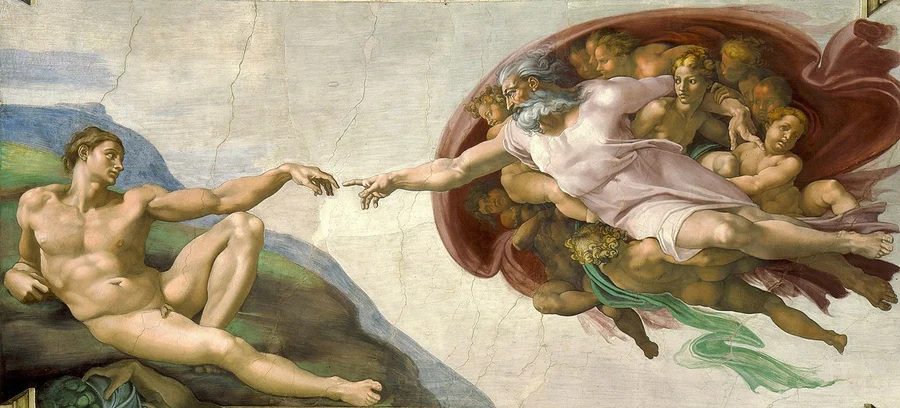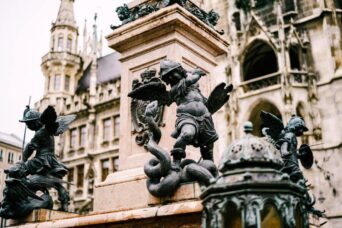What Does God Look Like?
August 2022
In a bid to understand Him more, we’ve all asked ourselves at some point, “what does God look like?”. It’s a natural instinct to be curious about the appearance of the Man we call Father, Lord, Redeemer, and Friend. A quick search would pull up images of a solemn-looking old man in flowing white garments with a great white beard, and unruly eyebrows. Topped up with a halo or two. However, that is far from what God truly looks like.
The best place to get our answers as Christians is always the Bible and it tells us that no one can see God’s face and live (Exodus 33:20). However, for our benefit, and to teach us about Himself, He revealed a semblance of His appearance to certain people in the Bible, and it is from their descriptions that we can try to draw an image.
So to get that biblically accurate portrait of God, we’ll be looking at how Scripture describes God’s appearance and how it can help us understand Him, and ourselves better.
What Does God Appear As In The Bible?
It is important to note that even biblical descriptions of God don’t do justice to how glorious He really is. They were born from a Father’s desire to reveal Himself to His children in a way that is fathomable or somewhat imaginable for their minds to contain.
The most powerful and detailed descriptions of God’s appearance in the Bible are found in Ezekiel 1:26-28 and Revelation 1:14-16.
Ezekiel 1:26-28 says,
“26. Above this surface was something that looked like a throne made of blue lapis lazuli. And on this throne high above was a figure whose appearance resembled a man.
27. From what appeared to be his waist up, he looked like gleaming amber, flickering like a fire. And from his waist down, he looked like a burning flame, shining with splendor.
28. All around him was a glowing halo, like a rainbow shining in the clouds on a rainy day. This is what the glory of the Lord looked like to me. When I saw it, I fell face down on the ground, and I heard someone’s voice speaking to me.”
Revelation 1:14-16 declares,
“14. His head and his hair were white like wool, as white as snow. And his eyes were like flames of fire.
15. His feet were like polished bronze refined in a furnace, and his voice thundered like mighty ocean waves.
16. He held seven stars in his right hand, and a sharp two-edged sword came from his mouth. And his face was like the sun in all its brilliance.”
Both Scriptures describe God with three key words; light, fire, and brilliance. From the verses, we can also note that Ezekiel and John kept using words like “as”, “like”, “what appeared to be”, “what looked like”, and “resembled”. This means that these verses aren’t an exact depiction, but their attempt to try to liken what they saw, to what was available on earth or things people had seen before. There were simply no words that could accurately capture God’s appearance.
Even Moses who saw God’s back had to be hidden in a supernatural rock when He passed by so he would not die (Exodus 33:21-23). Others like Daniel and Isaiah who also saw God had similar reactions; falling on their face in awe and an awareness of how unclean they really were compared to His holy presence. That’s just how terribly glorious and holy God’s appearance is.
Does It Matter If We Know What God Looks Like?
Genesis 1:27 says that we are made in God’s image. The Hebrew word for image is “tselem” which means shape, resemblance, or shadow. That means that we are in a sense, a mirrored image of Him. Understanding what He looks like and who He is, helps us understand who were made to be and are called to be transformed into.
However, it doesn’t really matter if we know what God really looks like or not. Christianity is built on faith. As Jesus says, blessed are those who have not seen yet believe (John 20:29). While we are not able to clearly know what God looks like, we are called to believe in Him and His power regardless.
How Is God Portrayed In Christian Art?
In earlier times, the subject of painting a picture of God was avoided by Christian artists because it was seen as sinful and disrespectful to Him. They assumed Exodus 33:20 where God talked about no man seeing His face, also referred to His portraits.
So He was originally portrayed as a huge hand or set of hands descending from the clouds. But by the Renaissance period (14th to 17th century), artistic representations of God were freely displayed.

In art, the three dimensions of God; God the Father, the Son, and the Holy Spirit are depicted in different ways.
God the Father is usually represented as a fatherly old man, with a long beard and sometimes with a triangular halo as a reference to the Trinity, or with a papal tiara (crown worn by popes) especially in Northern Renaissance paintings. In many of these depictions, the Father holds a globe representing the world or a book.
Jesus the Son was represented indirectly in earlier times by pictogram symbols like the ichthys (fish), the peacock, and an anchor. Later, symbols like the Chi-Rho and staurograms were used. In more modern art, he is represented as a younger man, sometimes fully bearded, with long hair and a cruciform halo. He usually has a longish face and almond-shaped eyes and His long hair is mostly depicted as brown, straight and parted in the middle. In other art, he is portrayed as a Lamb.
God the Holy Spirit is mostly pictured as a dove or fire. In early Christian art and depictions of the Trinity, He is drawn in human form with two other identical human figures which represent God the Father and Jesus Christ. They either sit or they stand grouped closely together to convey the unity of The Godhead.
Final Thoughts
In a nutshell, it’s impossible for us to get an exact picture of God because our minds cannot fathom Him in His full glory. No painting or sketch can capture His true awe-inspiring beauty. Even with biblical descriptions, each person imagines a different picture in their mind’s eye. But we rejoice because the Bible tells us that we will know Him fully as He is when we leave the earth and put off these bodies (1 John 3:2).
However, it is most important that we focus more on the character of Jesus than His image. When we know His character, with His help, we can cultivate them in our lives.
Hopefully, next time, when we are asked again “what does God look like?”, we can either help people see a bit of His appearance by referring to what the Bible says God looks like or we can simply say “look at me. I am the image of God”.

In this article:




